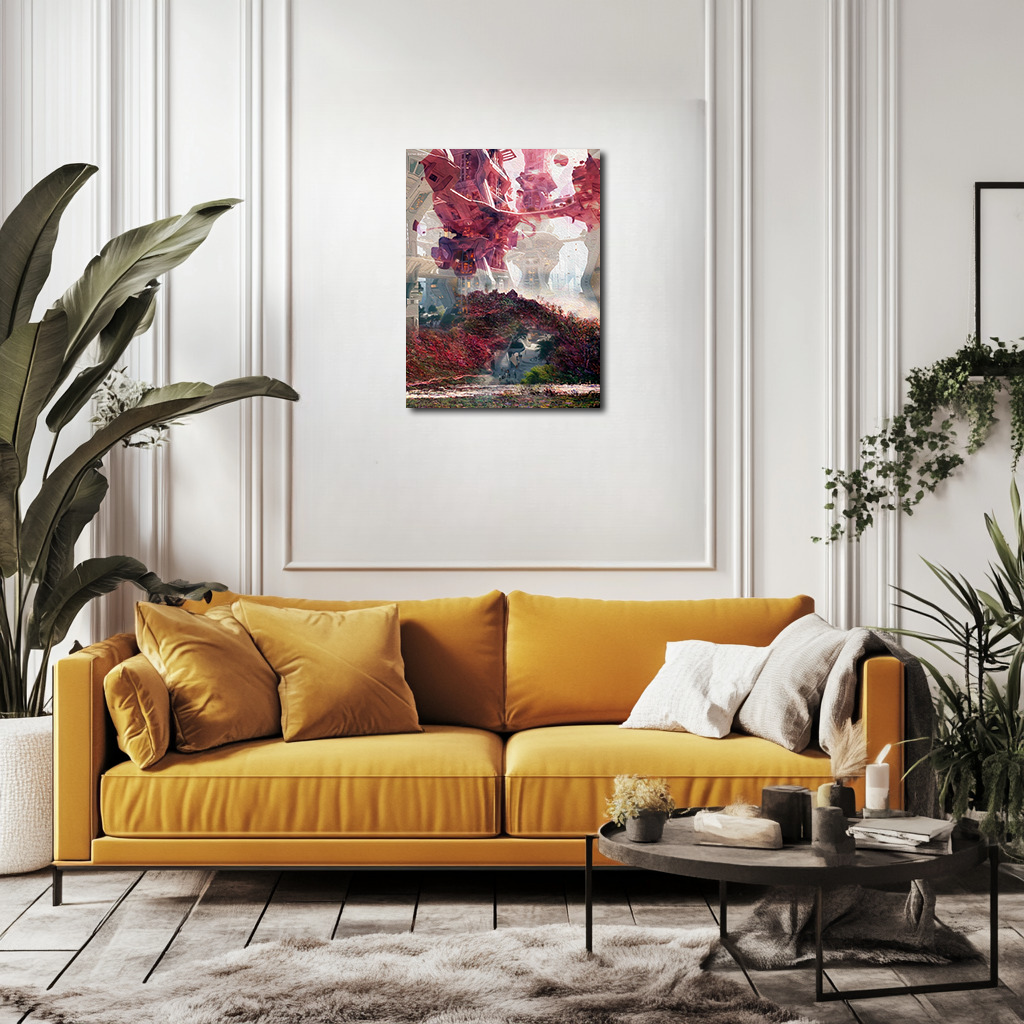The Village Beyond Time: Echoes of La Coche-Blond
This conceptual reimagining of Monet’s The Village of La Coche-Blond, Evening transforms a serene countryside into a vision of the future. The warm hues of Monet’s original village remain at the base, blending into a towering city of floating structures and luminous pathways. The contrast between organic, impressionist brushstrokes and sharp futuristic architecture highlights the tension between past and progress. Figures move through the landscape, caught between nostalgia and innovation, questioning whether time erases or preserves. This artwork challenges perception, asking if human ambition builds upon history or merely replaces it.
Please see Below for Details…
Hotline Order:
Mon - Fri: 07AM - 06PM
404-872-4663
Claude Monet’s The Village of La Coche-Blond, Evening , originally painted in the late 19th century, captured the warmth of dusk as it settled over a quiet French countryside. The brushstrokes followed the rhythm of nature, where the rolling hills and soft glow of sunset blended seamlessly into an atmospheric impression of rural life. The village, though small, stood as a testament to the harmony between humanity and the land, reflecting Monet’s fascination with light, season, and the passage of time.
In this conceptual expressionist reimagining, the village no longer exists in its original form but has expanded into a futuristic, almost celestial metropolis. The gentle landscape of La Coche-Blond has been transformed, layered beneath an imposing city of floating structures, interconnected pathways, and towering buildings suspended above the earth. The intimate evening glow of Monet’s work is now juxtaposed against a technological utopia, where hovering platforms and distant flying vehicles fill the sky with an artificial luminescence.
The lower portion of the artwork still holds traces of Monet’s influence, with trees and pathways immersed in a soft haze of red and pink foliage, resembling the organic brushstrokes of the original painting. However, the further upward one looks, the deeper the transition into a mechanical, constructed future. The village pathways are no longer dirt roads but geometric walkways leading into a towering civilization. The contrast between the untouched countryside and the futuristic structures above presents a powerful visual dialogue—between past and future, nature and architecture, simplicity and complexity.
The colors of this transformation hold deep significance. Monet’s warm evening palette remains embedded in the lower section, signifying nostalgia, memory, and the untouched past. The hues of red and gold whisper of a time when villages thrived under open skies, untouched by the ambition of expansion. As the painting shifts upward, the cool metallic tones of the futuristic city take over, casting an ethereal, artificial glow. The soft oranges and purples of the evening are now replaced by luminescent blues, whites, and silvers, symbolizing advancement but also detachment from nature. The blending of these two worlds is seamless, yet unsettling, as if time itself has folded, allowing different eras to coexist in one surreal moment.
A striking element in this composition is the way the human presence has changed. In Monet’s time, villagers would have been seen walking home, their silhouettes softened by dusk. Here, the figures are smaller, almost insignificant against the towering structures above. People still walk among the trees, but their presence is dwarfed by the mechanical city looming overhead. They are caught between two worlds—one grounded in history, the other reaching toward the future. This visual metaphor questions whether progress always leads to fulfillment or if something vital is lost when nature is overtaken by steel and light.
As an artist, my intent was to explore the duality of time and progress. Monet’s Village of La Coche-Blond, Evening captured a moment of stillness, where nature and life moved in harmony. This reimagining asks whether that harmony has a place in the future, or if it is destined to fade beneath towering advancements. The village remains, but only as a foundation for something much greater—an empire of human ambition that both honors and erases the past.
This piece speaks to the fragile relationship between nostalgia and innovation. It does not condemn the future but invites contemplation. What does it mean to build upward while the earth remains beneath us? Do the memories of simple evenings in the village disappear when cities replace them, or do they live on in the shadows of progress? The fusion of Impressionist warmth and futuristic precision creates a landscape that is both beautiful and unsettling, leaving the viewer to wonder whether time moves forward, or whether history and the future are forever intertwined.
Add your review
Your email address will not be published. Required fields are marked *
Please login to write review!
Looks like there are no reviews yet.








